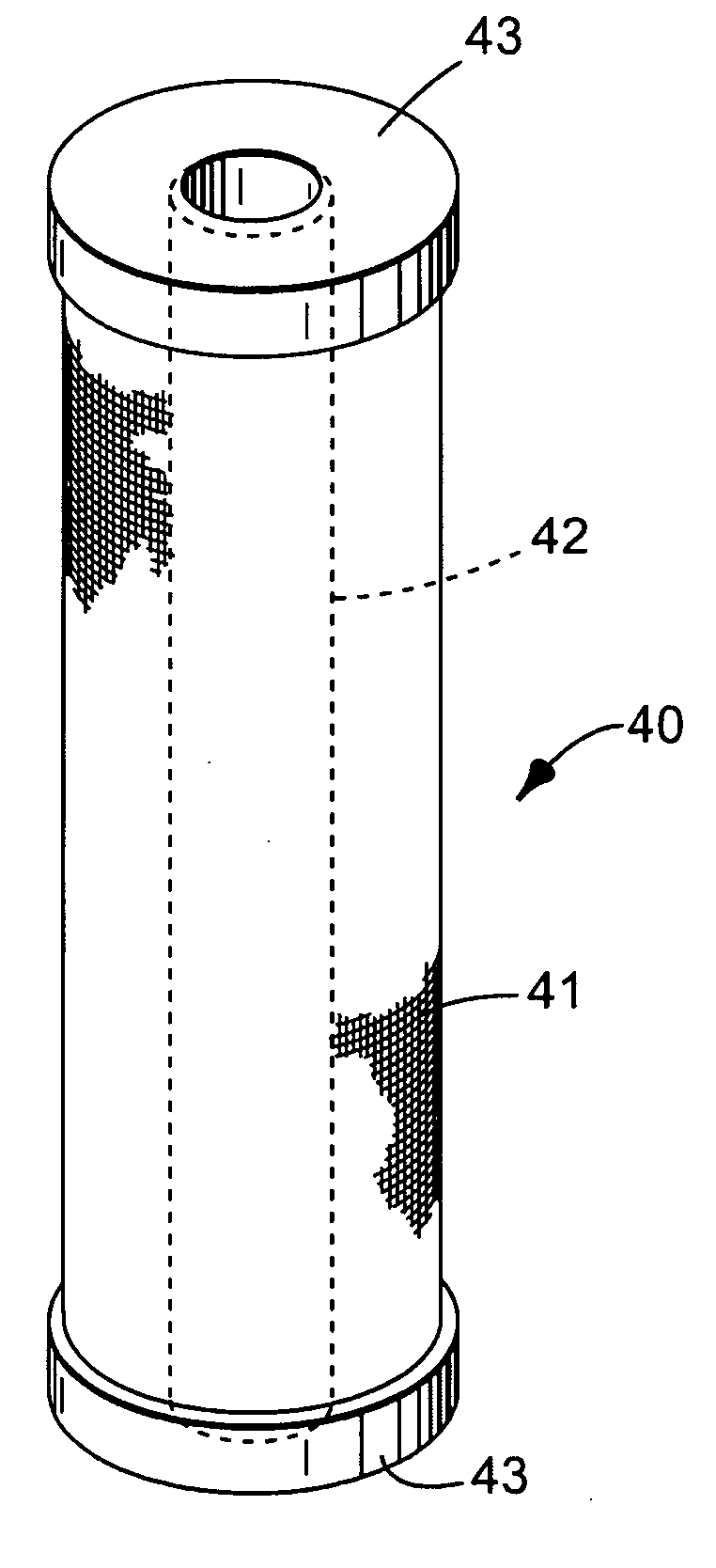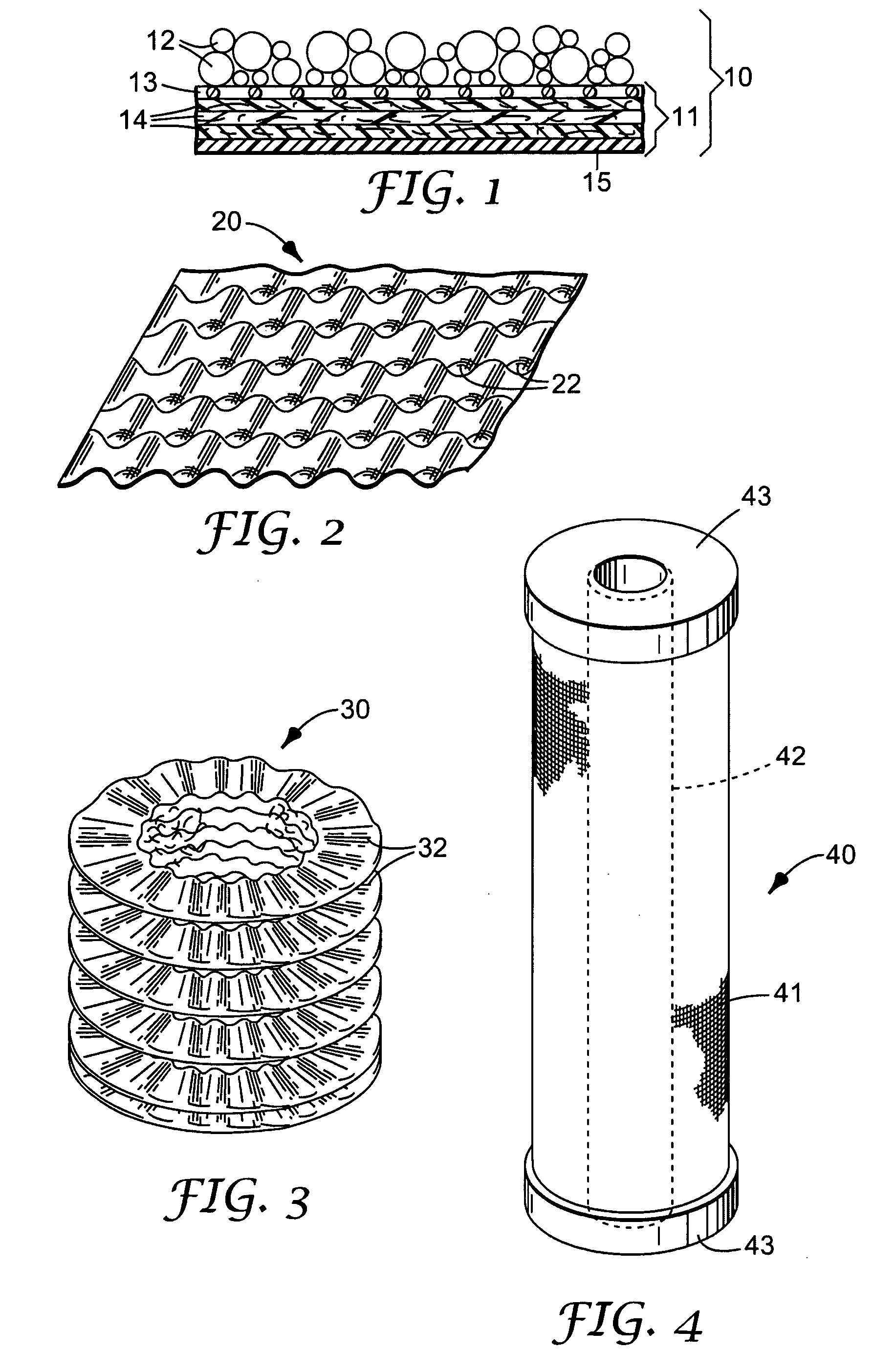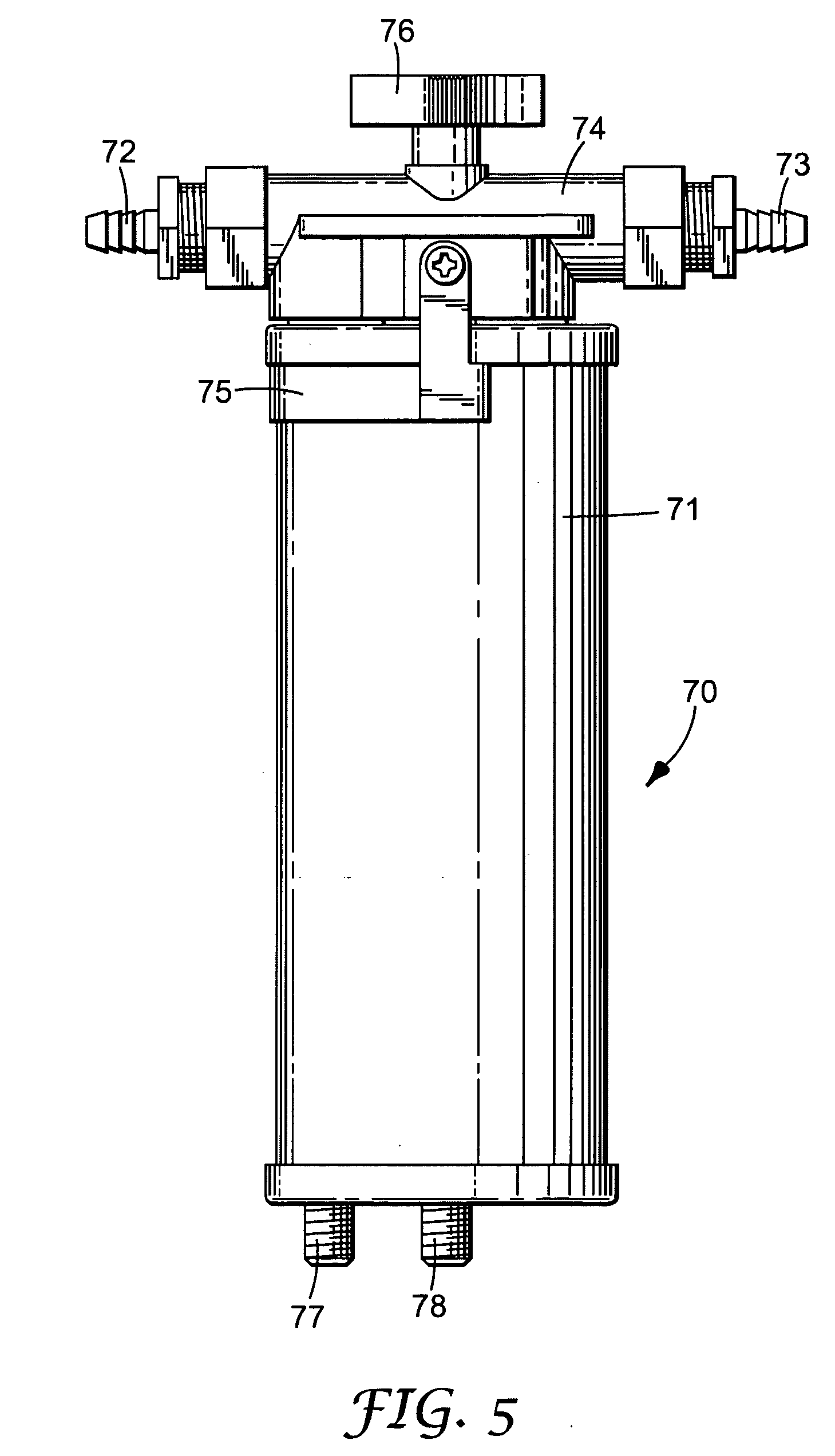Composite filtration article
a biomacromolecule and article technology, applied in the field of biomacromolecule separation and purification, can solve the problem of relative slow process with relatively low throughput, and achieve the effects of reducing porosity, increasing operating system pressure, and limited capacity
- Summary
- Abstract
- Description
- Claims
- Application Information
AI Technical Summary
Benefits of technology
Problems solved by technology
Method used
Image
Examples
examples 2-3
Preparative Examples 2-3
[0129] The same reverse phase polymerization procedure described in Preparative Example 1 was followed with reagent levels to give a 65:35 by weight AMPS / MBA copolymer (Preparative Example 2) and a 40:60 by weight AMPS / MBA copolymer (Preparative Example 3).
example 1
[0130] A 65:35 by weight AMPS / MBA copolymer was prepared by reverse-phase suspension polymerization as described in Preparative Example 2. Equilibrium cation exchange capacity for lysozyme was measured and found to be 160 mg / ml. Microscopic examination revealed spherical particles ranging from about 10-200 micrometers in diameter. An attempt to measure pressure / flow properties resulted in column over pressurizing at the lowest flow rate. A sample of these particles was classified to provide a size range of about 45-110 micrometers. Pressure / flow characterization of this classified sample produced a pressure drop of 20 psi (˜0.14 MPa) at 2 ml / min (150 cm / hr), but failed (>170 psi=1.17 MPa) at 3 ml / min (ca. 230 cm / hr).
[0131] A sample of nonclassified beads were evaluated in the following system: Filter Cartridge: Pall Versapor cartridge, 3 micrometer pore size, 1480 cm2 of filtration layer area [0132] Beads: AMPS / MBA (65 / 35); 5 ml hydrated bed volume [0133] Lysozyme loading solution:...
example 2
[0141] A monolithic medium was prepared having the same formulation as the aqueous phase of Comparative Example 2. MBA (0.993 g), a 50 wt % solution of AMPS in water (3.649 g), deionized water (2.88 mL) and isopropanol (10 mL) were mixed and gently heated with stirring in a glass vessel. After the mixture was fully dissolved, it was transferred to a polyethylene pouch (ca. 10 cm×7 cm×0.15 mm wall thickness) and a solution of sodium persulfate (0.0512 g) in water (0.3 mL) was added together with TMEDA (0.05 mL). The pouch was immediately heat-sealed, and then gently shaken on an orbital shaker at room temperature overnight. The pouch was cut open and the polymer mass was transferred to a filter funnel, where it was washed thoroughly with water, then acetone, and dried under vacuum overnight. The dried sample was ground lightly in a mortar and pestle. Particle size measurement indicated a very broad distribution, with particles ranging in size from 1 micrometer to 700 micrometers.
[01...
PUM
| Property | Measurement | Unit |
|---|---|---|
| Size distribution | aaaaa | aaaaa |
| Length | aaaaa | aaaaa |
| Fraction | aaaaa | aaaaa |
Abstract
Description
Claims
Application Information
 Login to View More
Login to View More - R&D
- Intellectual Property
- Life Sciences
- Materials
- Tech Scout
- Unparalleled Data Quality
- Higher Quality Content
- 60% Fewer Hallucinations
Browse by: Latest US Patents, China's latest patents, Technical Efficacy Thesaurus, Application Domain, Technology Topic, Popular Technical Reports.
© 2025 PatSnap. All rights reserved.Legal|Privacy policy|Modern Slavery Act Transparency Statement|Sitemap|About US| Contact US: help@patsnap.com



